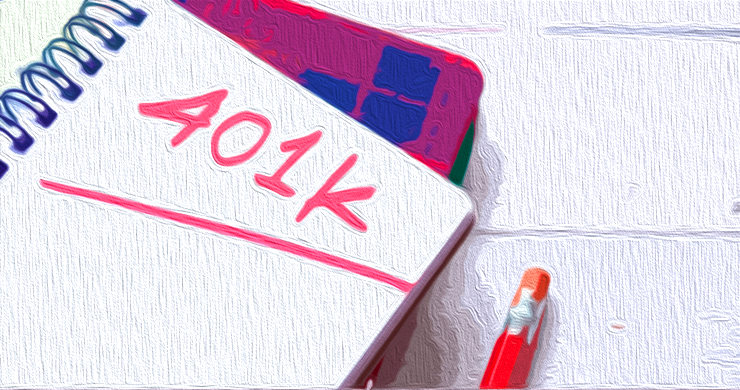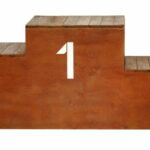
Introduction
Over the course of six days, newly launched spot bitcoin exchange-traded funds (ETFs) in the U.S. market, along with the revamped GBTC, witnessed a significant trading volume of $16.53 billion. However, GBTC, which had the majority of this trade volume, experienced a notable reduction in its bitcoin holdings. In just 24 hours, the trust shed over 14,300 bitcoin, bringing its total holdings down to 566,973 bitcoin.
$2 Billion in Bitcoin Leaves Grayscale's GBTC Since Jan. 12
GBTC, now recognized as a spot bitcoin ETF, holds a significant reserve of bitcoin (BTC). Since becoming a publicly traded ETF, the trust has experienced significant outflows. On Thursday, GBTC's holdings decreased by 10,823.86 BTC, and after the trading sessions on Friday, the fund saw a further reduction of 14,300.52 BTC. In total, since Jan. 12, 2024, the trust has seen an outflow of 50,106.59 BTC, valued at slightly above $2 billion.
Possible Factors for GBTC's Sell-Off
There are several factors contributing to the intense selling of GBTC. One factor is that GBTC shareholders may have felt constrained when the shares, initially trading at a premium to their net asset value (NAV), suddenly transitioned to a discount. This discount began in February 2021 and persisted until the beginning of this year. Long-term investors may have been waiting for an opportunity to sell once the discount narrowed. Additionally, investors who speculated that the discount would decrease and bought GBTC at a lower price may now be selling their shares for substantial gains.
Another possible reason for the sell-off is that some GBTC investors are exploring alternatives with more competitive management fees, as Grayscale's GBTC has the highest fees in its category. However, despite the higher fees, Grayscale's bitcoin trust has seen the highest trading volume out of all the newly launched ETFs, with $8.97 billion out of the $16.53 billion aggregate. This means that GBTC trades accounted for 54.26% of all the trading activity recorded by spot bitcoin ETFs.
Equilibrium and Competition
Before the recent approvals on Jan. 11, 2024, the focus was mainly on the expected inflows, with less attention given to potential outflows from GBTC. However, there is now a modest semblance of equilibrium, as IBIT and FBTC together hold a combined total of 53,479 BTC, slightly surpassing the outflows GBTC has experienced since Jan. 12.
Additionally, the cluster of ETFs competing with GBTC, IBIT, and FBTC have also seen growth in their BTC reserves, although not to the same extent. Despite holding significant amounts of bitcoin, these funds, along with the other seven ETFs, remain much smaller compared to GBTC's vast reserve of hundreds of thousands of bitcoin.
Conclusion
The outflows GBTC has seen since Jan. 12 indicate a shift in investor sentiment and a move towards alternative investment options. Factors such as the transition from a premium to a discount, speculation on decreasing discounts, and higher management fees have likely contributed to this sell-off. It will be interesting to see how the competition between GBTC and the newly launched ETFs unfolds in the coming months.
What are your thoughts on the outflows from GBTC? Share your opinions in the comments section below.
Frequently Asked Questions
Which type is best for an IRA?
When selecting an IRA for yourself, the most important thing is to find one that meets your lifestyle and goals. You need to decide whether you want to maximize tax deduction on your contributions, minimize taxes now but pay penalties later, and if you just want to avoid taxes.
If you have little money to invest, the Roth option might make sense. The Roth option is also a smart choice if you work beyond the age of 59 1/2 and plan to pay income tax on any withdrawals.
If you plan on retiring early, the traditional IRA may be better because you'll likely owe any taxes on the earnings. The Roth IRA could be more beneficial if you intend to continue working after age 65. This allows you the freedom to withdraw some, or all, of your earnings.
What proportion of your portfolio should you have in precious metals
Investing in physical gold is the best way to protect yourself from inflation. Because you are buying into the future value of precious metals and not the current price, when you invest in them, it is a way to protect yourself from inflation. You can expect your investment to increase in value with the rise of metal prices.
If you hold on to your investments for at least five years, you will receive tax benefits on any gains. Capital gains taxes will apply if you sell the investments within this time period. You can learn more about gold coins by visiting our website.
Can I have physical possession of gold within my IRA?
Many people are curious if they can possess physical gold in an IRA. This is a fair question because there isn't any legal way to do it.
However, if you examine the law carefully, you will see that there are no restrictions on gold ownership in an IRA.
Most people don’t realize just how much they could save by putting your gold in an IRA, rather than keeping it at home.
It's simple to throw out gold coins but difficult to put them into an IRA. If you decide not to keep your golden in your home, you'll need to pay twice tax. You will pay taxes twice: once to the IRS and one for the state in which you live.
You can also lose your gold and have to pay twice the taxes. Why would you want to keep your gold in your house?
You may argue that it is necessary to have the assurance that your gold safe in your home. To protect yourself from theft, store your gold somewhere that is more secure.
If you are planning to visit frequently, your gold should not be left at home. If you leave your precious gold unattended thieves will easily steal it.
You can store your gold in an insurance vault. You can rest assured that your gold is safe from theft, fire, earthquake, flood, and other hazards.
One advantage of storing your gold safely in a vault is the fact that you don't have to worry too much about property tax. Instead, income tax will be charged on any gains made from the sale of your precious metal.
If you prefer not to pay tax on your precious metals, an IRA may be a good option. You don't pay income tax on the interest you earn with an IRA.
Capital gains tax is not a requirement for gold investments. You can cash out your entire investment anytime you wish.
And since IRAs are federally regulated, you won't have any trouble getting your gold transferred to another bank if you move.
The bottom line? You can own your gold in an IRA. Fear of losing it is the only thing that will hold you back.
Statistics
- Same tax rules as traditional IRA SEP IRA contributions in 2022 are limited to 25% of compensation or $66,000, whichever is less Before setting up a Silver IRA, understand the fees and IRS restrictions. (sltrib.com)
- SEP-IRA”Simplified employee pension” For self-employed people like independent contractors, freelancers, and small-business ownersSame tax rules as traditional IRASEP IRA contributions in 2022 are limited to 25% of compensation or $66,000, whichever is less4. (sltrib.com)
- If you accidentally make an improper transaction, the IRS will disallow it and count it as a withdrawal so that you would owe income tax on the item's value and, if you are younger than 59 ½, an additional 10% early withdrawal penalty. (forbes.com)
- Silver must be 99.9% pure • (forbes.com)
External Links
kitco.com
en.wikipedia.org
wsj.com
takemetothesite.com
How To
IRA-Approved Precious Metals
IRA-approved precious metallics are great investments, whether you want to save for retirement and invest in your next venture. Diversifying your portfolio can protect you from inflation with a variety of options, including silver coins and gold bars.
Precious Metal Investment Products come in two main formats. Physical assets such as coins and bars are called physical bullion because they can be physically accessed. On the other hand, exchange-traded funds (ETFs) are financial instruments that track the price movements of an underlying asset, such as gold. ETFs are traded like stocks on stock markets, so investors can purchase shares directly from the company issuing them.
There are many kinds of precious metals you can buy. Gold and silver are often used for jewelry making and decorating, while platinum and palladium are more commonly associated with luxury items. Palladium is more stable than platinum and therefore better suited for industrial purposes. While silver can be used for industrial purposes, it is more commonly preferred for decorative purposes.
Physical bullion products tend to be more expensive due to the cost of mining and refining raw materials. They are safer than paper currencies, and offer buyers greater security. In particular, when the U.S. dollar is less powerful than it once was, consumers might lose confidence in the currency. However, physical bullion products don't rely on trust between nations or companies. They are backed instead by central banks or governments, providing customers with peace of mind.
According to supply and demand, gold prices can fluctuate. If demand rises, the price will increase. Conversely, if supply exceeds demands, the price will drop. This dynamic creates opportunities for investors to profit from fluctuations in the price of gold. Because they are able to receive higher returns on their investments, physical bullion product owners benefit from fluctuations in the price of gold.
Contrary to traditional investments, precious metals can not be affected by economic recessions and interest rate changes. As long as the demand for gold remains strong, it will continue to rise. Because of this, precious metals are considered safe havens during times of uncertainty.
The most popular precious metals include:
- Gold – Gold is the oldest precious metal. Gold is also called “yellow-metal”. Gold is a household name but it is rare underground element. Most of the world's gold reserves are in South Africa, Australia, Peru, Canada, Russia, and China.
- Silver – Silver is second most valuable precious metal, after gold. Silver, like gold, is extracted from natural deposits. However, silver is more commonly extracted from ore than from rock formations. Silver is widely used in both industry and commerce due to its durability, conductivity and resistance against tarnishing. The United States accounts for more than 98% global silver production.
- Platinum – The third most precious precious metal is platinum. It can be used to make high-end medical equipment, fuel cells, and catalytic converters. It is used in dentistry for dental crowns, fillings and bridges.
- Palladium: Palladium is the 4th most valuable precious metallic. Because of its strength, stability and popularity, Palladium is rapidly gaining in value among manufacturers. Palladium can also be used in electronics, military technology, and automobiles.
- Rhodium- Rhodium, the fifth most precious precious metal, is also known as Rhodium. Rhodium is very rare but is highly sought for its use in automotive catalysts.
- Ruthenium – Ruthenium is the sixth most valuable precious metal. Although palladium is scarce and platinum is rare, there are plenty of ruthenium. It is used to make steel and engines for aircraft, as well chemical manufacturing.
- Iridium – Iridium is the seventh-most valuable precious metal. Iridium plays an important role in satellite technology. It is used to create orbiting satellites which transmit television signals, telephone calls and other communications.
- Osmium – Osmium is the eighth most valuable precious metal. Osmium's ability to withstand extreme temperatures makes it a common metal in nuclear reactors. Osmium is also used to make jewelry, medicine, and cutting tools.
- Rhenium: Rhenium ranks as the ninth-most valuable precious metal. Rhenium is used to refining oil and natural gas, in semiconductors, and rocketry.
- Iodine- Iodine ranks as the tenth most precious precious metal. Iodine's uses include radiography, photography and pharmaceuticals.
—————————————————————————————————————————————————————————————-
Based on [POSTTITLE]
by [POSTAUTHOR]

















